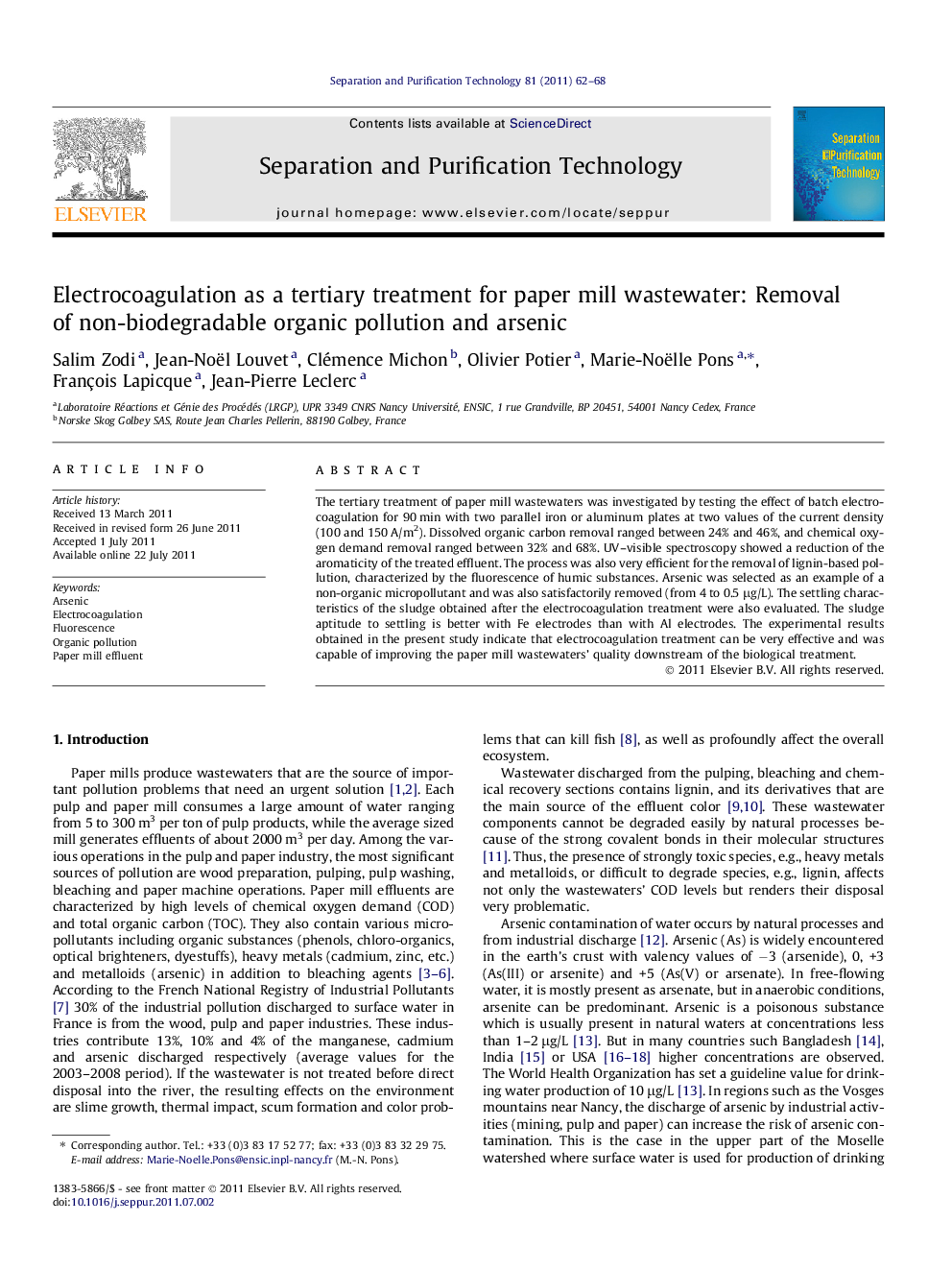| Article ID | Journal | Published Year | Pages | File Type |
|---|---|---|---|---|
| 642560 | Separation and Purification Technology | 2011 | 7 Pages |
The tertiary treatment of paper mill wastewaters was investigated by testing the effect of batch electrocoagulation for 90 min with two parallel iron or aluminum plates at two values of the current density (100 and 150 A/m2). Dissolved organic carbon removal ranged between 24% and 46%, and chemical oxygen demand removal ranged between 32% and 68%. UV–visible spectroscopy showed a reduction of the aromaticity of the treated effluent. The process was also very efficient for the removal of lignin-based pollution, characterized by the fluorescence of humic substances. Arsenic was selected as an example of a non-organic micropollutant and was also satisfactorily removed (from 4 to 0.5 μg/L). The settling characteristics of the sludge obtained after the electrocoagulation treatment were also evaluated. The sludge aptitude to settling is better with Fe electrodes than with Al electrodes. The experimental results obtained in the present study indicate that electrocoagulation treatment can be very effective and was capable of improving the paper mill wastewaters’ quality downstream of the biological treatment.
► Wood lignin derivatives and arsenic are co-removed by electrocoagulation. ► Soluble organic matter aromaticity decreases during treatment. ► Better pollution removal was obtained with Al electrodes than with Fe electrodes. ► Better settling properties are obtained with Fe electrodes than with Al electrodes.
